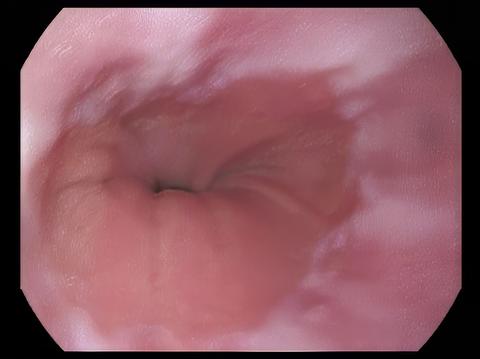Etrasimod as a treatment for eosinophilic oesophagitis
Dellon ES et al, Lancet Gastroenterol Hepatol. 2025 Jul;10(7):622-633
The sphingosine 1-phosphate modulator etrasimod resulted in a significant reduction of intraepithelial eosinophil counts and endoscopic improvements over 52 weeks in a randomized placebo-controlled phase II trial (VOYAGE). Symptom improvement was also evident in patients without a history of prior endoscopic dilatation therapy.
Background: Novel treatments are needed for eosinophilic oesophagitis. Etrasimod is an oral, once-daily, selective sphingosine 1-phosphate (S1P)1,4,5 receptor modulator in development for the treatment of immune-mediated inflammatory diseases. We assessed efficacy and safety of etrasimod versus placebo in adults with eosinophilic oesophagitis. Methods: In this double-blind, randomised, phase 2 trial, patients aged 18–65 years with a previous diagnosis of eosinophilic oesophagitis and histologically active disease from 64 clinical sites (in Australia, Belgium, Spain, Switzerland, and the USA) were randomly assigned (3:3:2) using an interactive web response system to receive oral etrasimod 2 mg or 1 mg or matching placebo for 24 weeks (centrally randomly assigned and double-blind; placebo-controlled period); they continued assigned etrasimod doses or were randomly assigned (1:1) from placebo to etrasimod 2 mg or 1 mg for 28 weeks (extension period). Randomisation was stratified by history of oesophageal dilation and concurrent proton pump inhibitor therapy. The full analysis set and safety set consisted of all randomly assigned patients who received at least one study treatment dose. The primary endpoint was percentage change from baseline in oesophageal peak eosinophil count (PEC) at week 16. Safety was assessed up to week 52. Patients were analysed according to treatment received in the placebo-controlled period and extension period. Findings: Between December 15, 2020, and May 27, 2022, 41 patients were randomly assigned to etrasimod 2 mg (20 [49%] females and 21 [51%] males), 39 to etrasimod 1 mg (17 [44%] females and 22 [56%] males), and 28 to placebo (14 [50%] females and 14 [50%] males). 85 (79%) of 108 patients completed the double-blind period, entering the extension period. Median percentage changes from baseline in PEC at week 16 were -58·4% (IQR, -86.2 to -26.3) for etrasimod 2 mg (p = 0.010 vs. placebo), -39.4% (-71.1 to 79.0) for etrasimod 1 mg (p = 0.29 vs. placebo) and -21.5% (-57.2 to 55.4) for placebo. In the placebo-controlled period, the most common treatment-emergent adverse events were gastrointestinal disorders (11 [27%] of 41 patients in the etrasimod 2 mg group, 13 [33%] of 39 patients in the etrasimod 1 mg group, and 14 [50%] of 28 patients in the placebo group). Bradycardia events, reported by three patients (2 [5%] patients in the etrasimod 2 mg group and 1 [4%] in the placebo group) in the placebo-controlled period, were mild or moderate in severity. No serious treatment-emergent adverse events or deaths occurred.

Interpretation: Etrasimod led to sustained histological and endoscopic improvements in eosinophilic oesophagitis over 52 weeks, symptom improvement in patients without dilation, and was well tolerated. This trial provides the first evidence that targeting the sphingosine 1-phosphate (S1P) pathway can improve disease activity in patients with eosinophilic oesophagitis and that S1P receptor modulation is a viable treatment target for this disease.